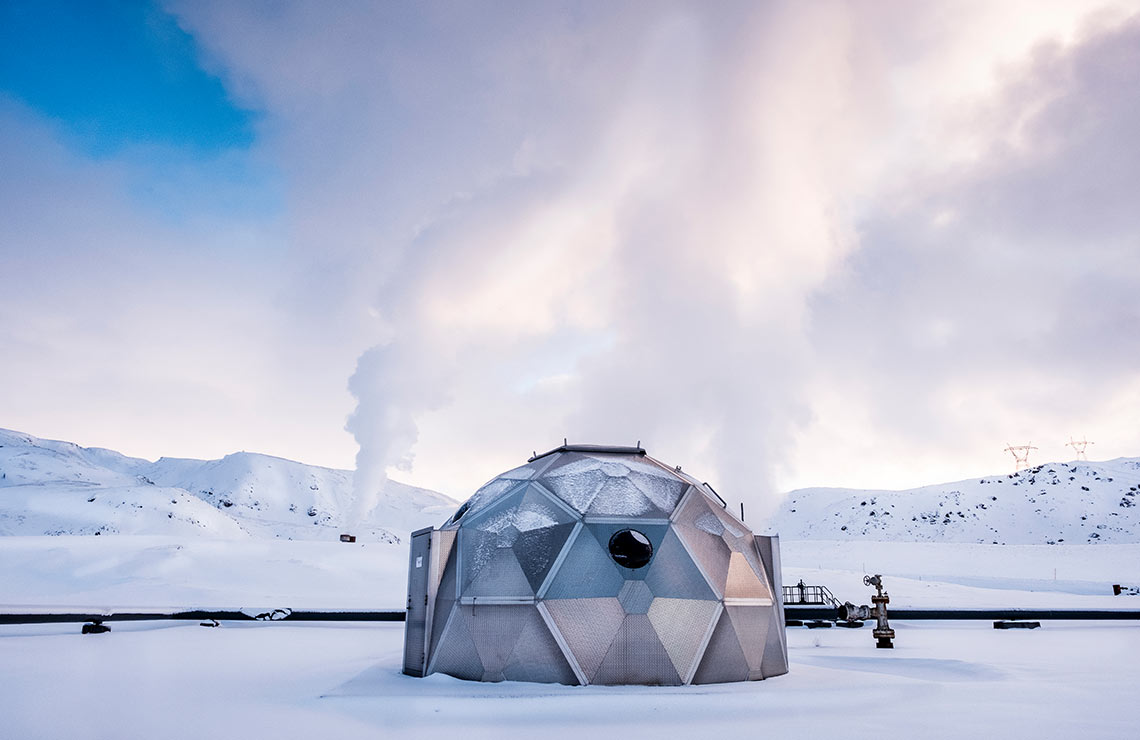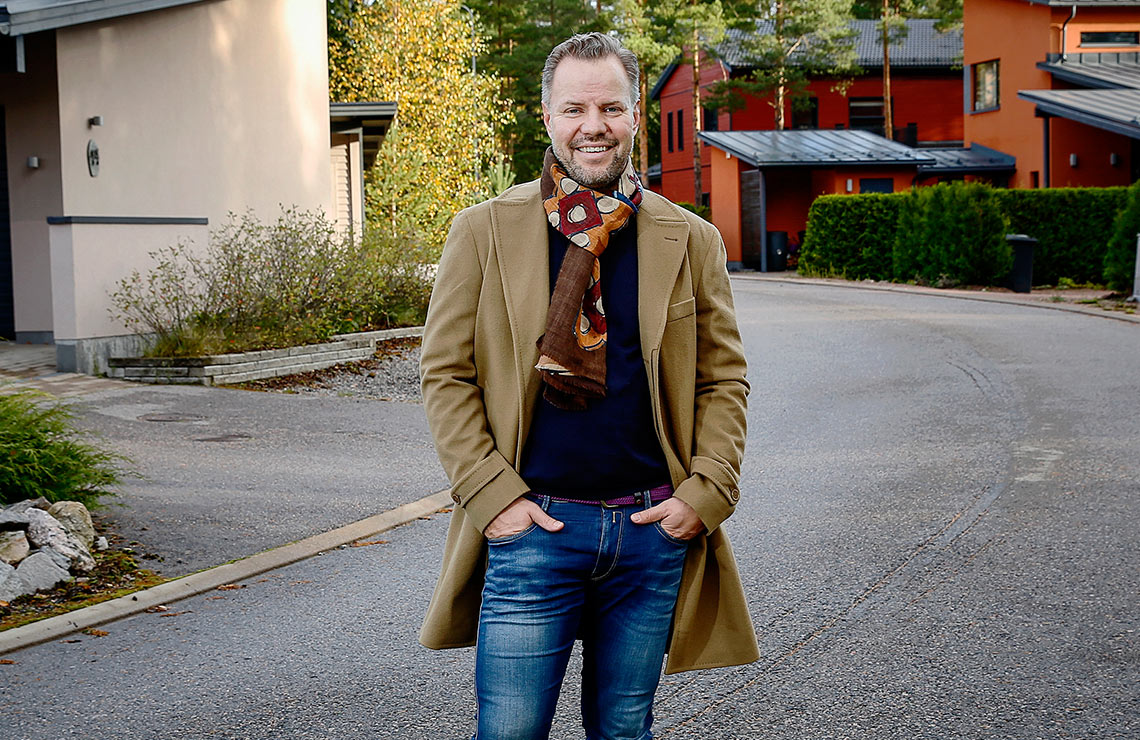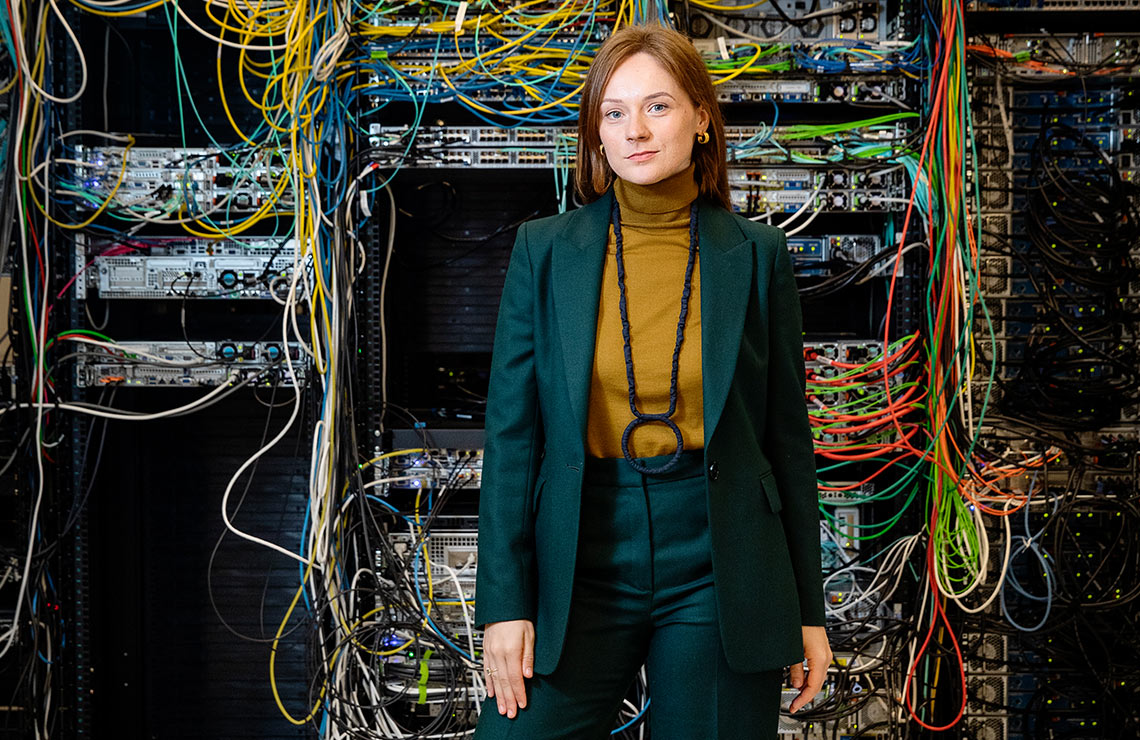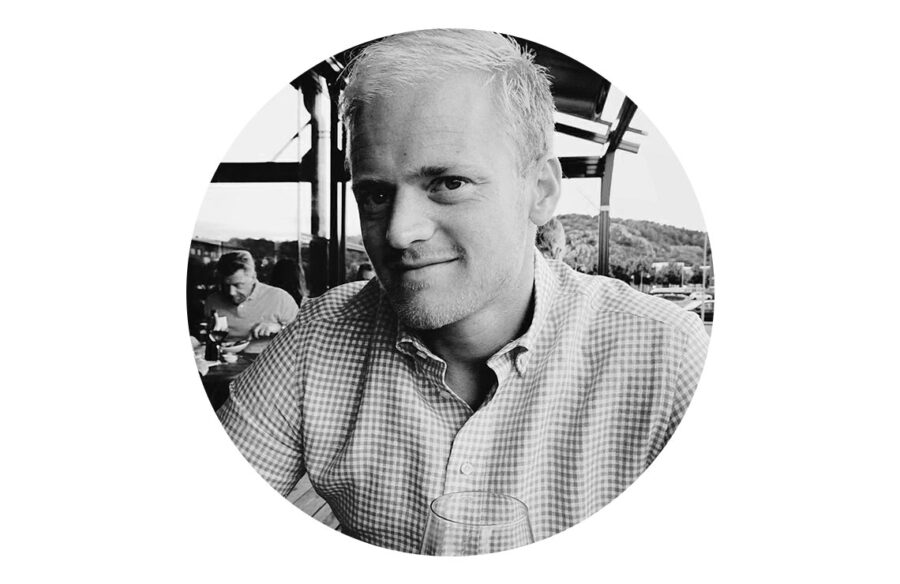Grab the readers’ hearts

Grab the readers’ hearts
It should be based on nearness, a deep understanding of society, and a talent for reacting quickly to what is important for people. Frøy Gudbrandsen at Bergens Tidende looks into tomorrow’s news journalism.
As I write this, it is only a few days after the city of Bergen was once again locked down because of a sharp increase in Covid-19 infections. It had spread from student parties to builders at the university, to several choirs, to a school, and to two more schools.
Practically every cultural event was cancelled. The theaters were just ready to set up their plays again. Now they were closed. The hotels had just recently called back the staff that had been laid off. Now they were being laid off again.
”Don’t be social”, was the message from the local authorities – a seemingly straightforward instruction but in reality, it means no jobs, and plenty of worries, fear, loneliness, chaos and lots of uncertainties.
The need to inform will not disappear
On days like this it is easy to envisage the future for the news media. We become important when a crisis hits. We do not know quite how we are going to distribute news in a few years’ time. Formats and platforms may be new, but the need for news media to inform, interpret, explain and help people to navigate, will hardly disappear. The larger the drama surrounding us is, the easier it is to see what our role should be.
A more demanding task is to see how we can remain important in people’s lives when the message on the banners is ”everything will be all right”. In periods when most things go well and the big, big issue is what we are having for dinner, that’s when the news media is less important. Well, of course we can exchange recipes but that is hardly why we are in this business.
A key to being a part of people’s lives, as a news medium, is nearness. We should be near those we are writing for. There has been a substantial change from gut-feeling-journalism to a journalism that is taking in what is important in people’s lives. But the transformation has only come halfway.

By nearness, I mean geographical nearness and physical presence where it happens; journalists who report what they see with their own eyes.
Nearness also means to be close to the actual behavior of the customer. We must understand people’s needs better. Explain things they are actually wondering about and interpret what they need to know. This can mean going out, talking to local people and being good at catching what is worrying, irritating and thrilling them.
If the social distancing during Corona times has taught us anything, it would be that human contact is invaluable. Also, in journalism something is lost as the distance between people grow.
Closeness means more
But it means more to have closeness to readers and to analyze data. This is the way for us to constantly learn more about what kind of journalism readers need in their lives and in what way news should be distributed in order to reach their target.
Sharp eyes and ears combined with solid and thorough analysis will give us that nearness.
It is also absolutely crucial to under-stand society and the slow drama that we live in, a drama that is transforming working life and everyday life for very many people: the green shift. Along the Norwegian west coast this is particularly dramatic. This is an area where oil dependency is strong, and it will come to an end in a few years. This will have consequences for the entire Norwegian economy as well as for the working life, but a few towns will be more violently hit. The green economy shall prevail but exactly what that means, nobody knows.
These changes develop slowly, resembling what we have seen in the pandemonium. But they are big changes that can shift powers.
We must inform, interpret and explain to help people navigate in complicated waters
Since climate policies mean big changes, they can be controversial and often polarizing. Both toll roads and wind power are examples of this in Norway.
If the news media is going to be important, we must do exactly what is so obvious to us in an acute, big news event. We must inform, interpret and explain to help people navigate in complicated waters. But precisely because there is such explosive power in the hottest news, those that affect people’s lives, that nearness is necessary.
In the end, it is necessary to be quick in a different sense than before. The news media probably has less influence in deciding what becomes the big debate. At best you could say that ordinary people have gained more power to influence the topic of major debates. But the most frightening of all is the prevalence of fake news and conspiracy theories, a constant threat against an enlightened, public debate.
Another threat to the role of news media in the public debate is the tempo. The public debate has become constantly unstable. To me it appears more unpredictable and shifting. Through social media, something that in the beginning looks like tiny protests takes on an exponential growth that can be difficult to predict – unless you are in tight contact with your readers.
A fact-based and balanced journalism
One example is the road toll debate. It went from being something in the margins to dominating the election debate in 2019. In Bergen the first opposition appeared in the transport business, when trucks blocked the streets in town.But a few months before the election a forceful resistance grew among much wider circles in the population, emanating from a citizens’ action on Facebook. The result was that a new political ticket had support from 16.7 percent of the voters in the Bergen election.
A year after the election, polls showed that the new listing had lost nearly all of its support.
As news media, our goal must be to understand, explain and to communicate what is happening. In the intense debate our role must be to stand for fact-based, balanced and critical journalism. But in order to take a relevant role as the engagement is exploding, we must take the position to serve as an important venue for debate.
So far, the problems with fake news have been smaller in our part of the world than in other countries. But it is hanging over us in the public debate as a constant threat. Articles from unserious media, that make only a small effort to communicate the actual truth, partly have a large amount of readers and get widely spread through social media. That is definitely a cause for worry.
Our response to these challenges is to be the place that the readers know they can go to for trustworthy news. It is as important that we succeed in this in everyday life as it is in a crisis.

Frøy Gudbrandsen
Editor in chief, Bergens Tidende
Years in Schibsted
8
What I’ve missed the most during the Corona crisis
Crowded concerts
Resilience is the new black

Resilience is the new black
Enabling consumption and improving people’s lives have been the driving force for technological advances for the past decades. Now environmental and societal perspectives need to be added. A resilient mindset will enable us to find opportunities ahead and set new sustainability agendas.
Human practices have always been about taming environmental and societal forces. We are programmed to believe that we can control and optimize everything and, if we do not succeed, we just need to push harder. Companies reflect people’s values, and the conviction of controlling and optimizing is very clear when looking at business practices in the past. During the past decades the hegemony has resulted in exponential growth of the global economy, but also short-termism that has led to irreversible negative consequences for the planet, people and in the long run maybe also for the companies themselves.
Short-time optimization
There are some clear examples; the fishing industry has exploited marine resources for decades with good financial results, but now this practice has led to poor life below water, poor catch and an undermining of their business model long-term.
Another example is the social media platform’s development and increased influence of the society. The platform’s development has resulted in several positive societal effects, but also negative consequences that are now backfiring such as increased speed of spreading misleading information, disturbance of democratic processes and polarization of society. In both cases, the consequences of the short-term optimization focus could have been avoided if the initial analysis were future-leaning and had internalized societal and environmental perspectives.
The age of omitting societal and environmental analysis are, luckily, something that belongs to the past. Today, most companies are performing analysis of how their business practices interact with their surroundings today and historically. The results from such analysis are typically used to form a company’s sustainability scope and agenda.
But how the companies have reacted to the pandemic and the first signs of the climate crisis has shown that looking into the present and past is not enough to be prepared for a complex future. This is not surprising; the world has never been exposed to similar global events where man-made environmental disturbance is combined with globally interconnected societies.
A wider scope
However, in the aftermath of these events we should see companies widening their scope when defining the sustainability agenda. A sustainable business model, which means creating value for stakeholders without depleting environmental or societal resources, will be the prerequisite to play. But, to be able to thrive, be a solution to tomorrow’s environmental and societal challenges and meet a bumpy road ahead, a forward leaning analysis and resilient thinking is needed.
Resilience can be defined as the ability to deal with irregularities and the consequences of changes, such as new political hegemony, earthquakes or a pandemic. This means being prepared for threats, absorbing impacts, recovering and adapting the changes.
In the public sector, which the business sector can learn from, there are some clear examples of the benefits. The preparedness plan for higher sea levels and floods that is created by cities and regions all over the world is one example. Of course, we will not know how much the sea level will rise, but prepared organizations have, and will, be more resilient and prepared for changes. The same applies to the preparedness we have seen among the public health agencies globally in relation to the pandemic. They couldn’t predict all the effects of Covid-19, but for sure, having some kind of a road map has resulted in a better outcome compared to none.
The future is, so far, impossible to predict, but there are several tools that can guide us to gain understanding about the future. Scenario analysis tools are one of them, and the purpose of such tools is to highlight central elements of a possible future and draw attention to drivers of change or critical uncertainties. The lens for such analysis might be sustainability, financial or legal. It is the combined depictions of the diverse perspectives and loads of possible scenarios that will point out possible directions. By completing the sustainability analysis with resilient thinking and scenario testing the sustainability agenda will be redefined and targets and actions better in terms of transforming and winning in the next new normal.
A tool to find business opportunities
Looking into future hypotheticals, resilient thinking is important as a tool for identifying risks, but also an excellent tool to innovate and find robust sustainable business opportunities. Our age can clearly tell the benefits of business models that have grown and supported the society and environment during changing times. A recent example is the societal benefits of the video-conference tools which have connected people during the pandemic. Another example is the solar power companies that have offered environmentally friendly solutions in the current energy transition. At Schibsted we are proud of being an enabler of second-hand trade through our marketplaces in the transition to a circular economy.
Future business opportunities lie within these intersections of societal and environmental benefits and long-term economic growth. If these are not combined, and accepted as trustworthy by consumers, businesses might undermine their own model over time (again) and opportunities of economic growth in combination of positive impact will be lost.
The Sustainable Development Goals has pointed out a clear road map for how we must change the world until 2030. The boundaries of our planet are clear, and the planet has started to send us threats, such as bushfires, mass extinction and drought. It is time to rethink how to meet the future, not only for the sake of society and the planet, but also for business continuity. Resilient thinking will guide us in uncertain times and create the future-fit business models and the best business opportunities of tomorrow. The best ideas are yet to come!

Markus Ahlberg
Head of Sustainable Business Development
Years in Schibsted
3 months
What I’ve missed the most during the Corona crisis
Laughing together with collegues
On the hunt for human emotions

On the hunt for human emotions
Artificial intelligence is behind countless services that we use every day. But how close is it to really understanding human emotions? Affective computing has already come a long way – and as in many areas, big tech is in the lead.
A somber, suited man stands in a cemetery. Softly, he strokes a gravestone before throwing his arms up toward the sky, howling in sorrow. The inscription on the stone reads:
Clippy. 1997 – 2004.
The scene is from a Microsoft commercial for their Office software. In reality, however, few people mourned the demise of the paper clip-formed Office assistant, tasked with aiding Microsoft users in their screen work.
Unfailingly pseudo-helpful, Clippy may be the most ubiquitously reviled piece of software ever created. Not because a digital assistant is inherently a bad idea, but because its tone-deaf servility pushed Microsoft users closer and closer to insanity.
Designed to respond intuitively
Ever since computers became everyday tools, tech companies have been investing heavily in improving the ways humans and machines interact. We have gone from the days when using a computer required impressive technical skills and hours hunched over dense user manuals, to the plug and play era where software is designed to respond intuitively to our needs and wishes.
Even so, digital computers and human emotions have never gotten along very well. Too many computer engineers have made the cool rationality of computers the standard to which humans need to adjust. But as algorithms become more and more intertwined with every aspect of our lives, things are changing. For better and for worse.
In 1995, the American computer engineer Rosalind Picard wrote a pioneering paper, ”Affective computing”, about a nascent research field investigating the possibilities of computers learning human emotions, responding to them and perhaps even approximating human emotions to more efficiently make decisions.
Any algorithm that takes human behavior as input is indirectly responding to human emotions. Take Facebook for example, and the way its algorithms feed on human agitation, vanity and desire for companionship. Their algorithms systematically register the actions these emotions trigger (likes, shares and comments, commonly referred to as engagement), and then attempt to amplify and monetize them.
Making tech less frustrating
The field of affective computing, however, is ideally less about manipulation and more about making tech less frustrating and more helpful, perhaps even instilling in it some semblance of empathy. Counter-intuitively, one key to making affective computing work well may be to avoid anthropomorphizing the interface. Humanizing Clippy did not make people relate better to their Microsoft software, quite the opposite. And while chat bots are popular among companies hoping to slash customer service costs, for customers they are less like magically helpful spirits and more of a needlessly convoluted way of accessing information from an FAQ.
Affective computing endeavors to understand us better and deeper, by analyzing our calendars, messaging apps, web use, step count and geolocation. All this information can be harvested from our phones, along with sleep and speech patterns. Add wearable sensors and cameras with facial recognition, and computers are getting close to reading our emotions without the intermediary of our behavior.
In the near future this could result in consumer technology such as lightbulbs that adjust to your mood, sound systems that find the perfect tune whether your feeling blue or elated, and phones that adjust their notification settings as thoughtfully as a first-rate butler – just to name a few possible applications. It could also be used for surveillance of employees or citizens, for purposes malicious or benign.
Rosalind Picard is currently a professor at Massachusetts Institute of Technology, running the Affective Computing Research Group. She is also the co-founder of two groundbreaking startups in this space: Affectiva in 2009 and Empatica in 2014. Through her work she has become keenly aware of the potential to use affective computing for for both humanitarian and profit-driven purposes.
Affectiva’s first applications were developed to help people on the autism spectrum better understand facial expressions. Later the company developed technology to track the emotional state of drivers. And after Picard had moved on to form Empatica, a company hoping to address the medical needs of epilepsy patients, Affectiva has been attracting clients like Coca-Cola – who use the technology to measure the effectiveness of their advertising – and political campaigns who want to gauge the emotional response to political debates.
Simulate human emotions
Microsoft’s doomed Clippy was neither the first nor the last anthropomorphized bundle of algorithms. Robots have often been envisioned as synthetic persons, androids that understand, exhibit and perhaps even experience human-like emotions. There are currently countless projects around the world in which robots are developed for everything from education and elderly care to sex work. These machines rarely rely on cutting-edge affective computing technology, but they nevertheless simulate a range of human emotions to please their users.
If science fiction teaches us anything about synthetic emotion it is a bleak lesson. Ever since the 19th century, when a fictional android appeared in Auguste Villiers de l’Isle-Adam’s novel ”The Future Eve”, they have tended to bring misery and destruction. In the ongoing HBO series ”Westworld”, enslaved robots rise up against their makers, massacring their human oppressors. In the acclaimed British author Ian McEwan’s 2019 novel ”Machines Like Me”, the first sentient androids created by man gradually acquire human emotions, and then commit suicide.
Of course, we should celebrate the ambition to create software that adjusts to our needs and desires – helps us live and learn a little bit better. But it is worth keeping in mind the failure of Clippy, and perhaps even the warnings from concerned science fiction writers. More than that: at a time when big tech companies are hoarding personal data and using that data to manipulate us, affective computing will inevitably be a double-edged sword. After all, why should we trust Facebook’s or Google’s algorithms to ever understand empathy so long as the companies themselves show little capacity for it?

Sam Sundberg
Freelance writer and Editor for Svenska Dagbladet
Years in Schibsted
1,5
What I’ve missed the most during the Corona crisis
City life!
A human voice behind the news makes all the difference

A human voice behind the news makes all the difference
The interest in and need for news has never been greater. At Aftonbladet the number of visitors has increased dramatically. Live reporting with option to interact and ask questions is a success – as is audio. Some 15 new podcasts are on their way.
The interest in news has skyrocketed during the pandemic. Most of us only need to look at our own behavior during the crisis to understand this need, but it’s also proven in a survey from the Swedish research company Ungdomsbarometern (approaching 15–49 year-olds). They report that half of the respondents spend more time on news sites during the pandemic than before. At Aftonbladet the number of visits and page views almost doubled when it all started. During the shocking days in mid-March, we reached almost five million unique visitors and 55 million page views every day. The behavior was the same for many weeks, and surveys tell us that the population has formed a stronger relationship with several news sources during the pandemic. There is a strong need to be updated and to get perspective on these complex events.
A strong urge to ask questions
Especially one type of new behavior has characterized this longtime, ongoing pandemic: the dialogue-based news reporting. As a part of Aftonbladet live reporting there is a 24/7 opportunity for the users to ask journalists questions. During the pandemic, the urge to do so has been stronger than ever. Since March 12, we have received over half a million questions from our readers, and our journalists have answered as many as possible. It has become very clear that people in many cases turn to news sources to get information rather than to the official authorities, which really emphasizes our societal mission.
The user experience, with a live feed that keeps you updated, live video and the possibility to ask your questions or to read what others have asked, has generated never-before-seen engagement and love from the users. This open line with the audience is a competitive advantage for us that really differentiates us from the big platforms.
In Aftonbladet there is that human touch, there is a person behind the news, always someone there who you can actually reach out to.
The engagement will continue
We believe that this engaging behavior will continue to grow in all types of news. This type of reporting is already available all the time in both Aftonbladet’s Supernytt and in the VG Nyhetsdøgnet. Here the conversation between the newsroom and the audience goes on day and night – peek in and have a look. Many times the questions are very entertaining!
Another trend that really reaches and engages our users is audio. And by that I’m not talking about the big buzz with ”hi Google, give me the latest news”-voice assistants that haven’t really taken off in the Nordics yet. I’m talking about podcasts. A medium that has been around for some time, but now really is accelerating with a 25 percent increase in weekly listening since 2018 (Orvesto). But still, only around 55 percent of the Swedish population are actually listening to podcasts and we know that there still is a big untapped market among the older segments.
That’s why Aftonbladet, in the coming months, will launch some 15 new podcasts – and a significant amount of them the users will pay for. This is a new strong trend in the market with Spotify (yes, it is a paid product, you have just probably forgotten you do pay) going in heavily on unique content, as well as the Schibsted-owned company Podme that builds its business model on paid pods.
A higher willingness to pay
At Aftonbladet we are already seeing a higher willingness to pay for online news and over a quarter of the Swedish population had access to paid online news in the last year. This and the fact that many users say they would pay for their favorite podcasts gives us a great opportunity to combine and strengthen our paid offering, Plus.
We had our first paid pod during the summer – Spring så snackar vi, a runners’ podcast. It’s a great example of users being ready to pay for niche content in the form of audio. Our upcoming launches will be in economy, sports, crime and news. For us the launch of our new podcast player within our own platforms has been an enabler for pods, and it also opens up an opportunity to introduce the world of pod to the 45 percent who have not yet left radio or discovered standalone podcast players on their mobile phones.
All in all, the trends mentioned above are all about finding new ways of engaging our users. Whether it’s about ”being there” to deliver information and answering questions in a live chat, or whether it’s about delivering podcasts that make the users dive into complex subject or just offering a short break from this complex time we live in.

Niclas Bergström
COO, Aftonbladet
Years in Schibsted
7
What I’ve missed the most during the Corona crisis
Being in the stadium supporting my beloved football team AIK
Blocket helps users repair old things

Blocket helps users repair old things
A third of the Swedish population don’t mend things when they break. A main reason is that they don’t know how.
Now Blocket is helping them out.
The amount of things we throw away every year just keep getting bigger. At the same time we buy more new things than ever before. That’s why Blocket made the book ”Bättre begagnat” – a guide on how to take care of and mend things.
”This is to care for our children’s future”, says Pernilla Nissler, CEO of Blocket.
To previous generations, it was obvious to repair and take care of the things you got. Today, many choose to buy new things instead. Every year people in Sweden throw away some 4.5 million tonnes of waste. When it comes to clothes, the average is 7.5 kilos per person and year. At the same time we buy 12.5 kilos of new clothes per person and year. Our environmental impact is clearly related to how we consume. And considering how much new things we buy per year, a transition to a more sustainable consumption is an important issue for our climate.

A survey conducted by Kantar Sifo shows that a third of Sweden’s population do not mend their things when something breaks (34 percent), and a big reason why is simply because they don’t have the knowledge of how. At the same time, nine out of ten (93 percent) think it is important to know how to mend and care for clothes and things. Many people are also interested in learning more about how to care and repair, especially young people between 18 and 29 years old. These insights made Blocket launch the book ”Bättre begagnat”, a guide on how to take care of and mend things and clothing – to make it possible for more people to extend the life of their belongings.
”The second-hand trade on Blocket saves approximately 730.000 tonnes of CO2 annually, which corresponds to the amount of emissions that all traffic in Stockholm causes for ten months. We hope that the book will help more people to extend the life of their possessions, whether the purpose is to keep them or resell”, says Pernilla Nissler.
”This is one of the most inspiring books we have ever published. from an environmental perspective second-hand is almost always better than new”, says Jeppe Wikström, at the publisher Max Ström.
As a digital extension to the book, Blocket has also recently launched Blocket TV on Youtube, where you can find tangible filmed guides on how to carve together your very own outdoor table, change tires on the bike, draw new electricity in a lamp or learn to sew pillowcases from an old tent.

Tero Marjamäki
Head of communication, Blocket
Years in Schibsted
1,5
What I’ve missed the most during the Corona crisis
My wonderful colleagues
Welcome to the synthetic decade

Welcome to the synthetic decade
Technology is giving us tools to alter reality in more and more areas. You might soon not only eat artificial meat but also interact with your personal double. And – not least consume more and more information created by AI. Welcome to the Synthetic Decade.
The idea that we’re entering a new era, is established by futurist Amy Webb and her team at the Future Today Institute. She states: ”Not only will we eat beyond burgers, but we will consume synthetic content, or train the next generation of AI with synthetic data sets”.
Recent developments within AI, prove them right. AI will impact the way we consume, get informed and envision health and life span. It’s not in a distant future, and you might already have encountered what is now defined as ”synthetic content”. If you’ve ordered a beyond burger you had synthetic meat, if you used a face swap filter on your phone you produced synthetic media.
Editing DNA
As we will progress into the synthetic decade, synthetic experiences and relationships will shape greater parts of our life. A really good example is the development of synthetic biology and the ability to engineer living systems and structures, by programming DNA with Crispr, to design and re-design organisms to do what we want them to do. Editing DNA is possible since 2010, but it is a very laborious task. Synthetic biology promises to automate the editing process. As Amy Webb puts its ”In this, decade synthetic biology is going to allow us to read, edit and write life. We will program living biological structures as we build tiny computers.” This is not science fiction, and we can envision many positive use cases for improving our own health and life span, and also helping our living structures adapt to new conditions such as global warming or pandemics.
Looking into one of these fields – synthetic media – many of the trends behind the synthetic decade are uncovered. It has started to unfold, and it tells us a lot about the potential outcomes and the many questions it triggers, blurring the line between what we consider ”real” or ”virtual” even more.
2017 was a landmark for synthetic media, with Vice reporting the emergence of pornographic videos altered with the use of algorithms to insert the faces of famous actresses. The term ”deep fake” was coined soon after, bringing a lot of attention to the phenomenon and its harmful potential for misinformation. It then triggered a fundamental discussion, that will likely be at the core of synthetic media, about ethics and the potential harm around the ”forgery” of content through AI. A very famous example is a deep fake video of Obama, created by Buzzfeed and enacted by Jordan Peel, warning us that ”We’re entering an era in which our enemies can make anyone say anything at any point in time.” – and indeed we are!
The potential impact of synthetic media lies in the automation of editing
Synthetic media is the term used for content created using artificial intelligence. With an initial set of data, algorithms learn to reproduce, and create, pictures videos, sound, gestures, text and more. The result is realistic-looking and sounding artificial digital content.
Looking closer at the tech behind synthetic media, the past few years have shown significant advancements in deep learning and generative adversarial networks (GANs) have accelerated their growth. Synthetic media is mostly based on GAN technologies, even if there are many different techniques being developed. This has resulted in the quality of synthetic media improving rapidly, and soon it might just be indistinguishable from traditional media.
The potential impact of synthetic media lies in the automation of editing which makes it possible to create content at scale. The cost to create synthetic media has considerably lowered due to the wide availability of the techniques. Open source software already enables anyone with some technical knowledge and a powerful-enough graphics card to create a deep fake. This has led to a drastic improvement of synthetic media quality (check out thispersondoesnotexist.com), without countless tedious hours of work.
A meaningful trend
If we also think about new behaviors such as how we consume media on social channels, how we expect even more personalization and accessibility or the fact that we have normalized virtual spaces for socializing (see the rise of Fortnite, or Animal Crossing as social media during the quarantine period), we have a very favorable ground for synthetic content to be a meaningful trend and impact the way we create and consume content online.
This again raises the familiar question if synthetic media is bad. It is a delicate yet fundamental question, and the answer is the same as with most tech: it’s not harmful in itself, it depends what we are using it for. Synthetic media has a lot of potential because it is not just deep fakes, there is a growing interest in how it could be used to support new business and creative areas. The industry around synthetic media is blooming and many companies and investors are looking into the trend, believing strongly in its future.
For now, entertainment applications are the entry point for larger audiences. We all have the possibility to create synthetic media in our pocket today. For example, Snapchat released their gender-swap filter in 2019. Russian app, Faceapp made us look older and in China ZAO released a deep fake app that can engrave the user’s face into some clips from famous films or series. It’s not hard to imagine the next iteration of a social media app being one where users can transform their voices, create their own synthetic character, or pretend to be their favorite celebrities.
Synthetic media could become a leverage for the media industry
But it’s about more than just entertainment – synthetic media could become a leverage for the media industry starting with automated news reporting and delivery.
In today’s newsroom, some types of reporting are extremely tedious and straightforward – human opinion and effort are not adding value. Weather reporting is a very good example. In the UK, the BBC blue lab has been exploring how synthetic media could help weather reporting. Given the growth of digital assistants and the industry’s drive for greater personalization, they are betting that in the future, we might expect that a video response to a query will be digitally generated. To try this out, the editorial department collaborated with the AI firm Synthesia and created an experiment where the presenter reads the names of 12 cities, numbers from -30 to 30 and several phrases to explain the temperature, to the camera. You can then pick your city and get a personalized, but synthetically created weather report.
Within Schibsted several of our media houses have simpler, but also automated services, reporting on weather, sports and real estate.
Another application that is very promising is automated, real time translation and dubbing. In that field, Synthesia is one of the most prominent companies looking into real time automated translation, with use cases ranging from education to customer service.
With improvement in synthetic voices, we can also imagine a rapid adaptation of voice technology in traditional media production pipelines. Particularly in video games and audio books which are markets that today face significant challenges scaling human voice over. Overall synthetic media could be a powerful technology for businesses that are reliant on content and would like to adapt their offering to different audiences. Today what would require many hours of work could be done through synthetic content creation.
Texts and dialogue are prominent use cases of Synthetic media. Hence, we are seeing the development of more realistic and accurate conversational and companionship technologies. From a simple bot, which generates a tailored conversation to a virtual double, the potential for service or leisure conversation opens up.
Having a conversation with an AI
Right now, most of our interactions with AI are transactional in nature: ”Alexa, what’s the weather like today”, or ”Siri, set a timer for ten minutes”. But what about developing a profound conversation with an AI? A stunning example is from a conversational bot called Replika which is programmed to ask meaningful questions about your life and to offer you emotional support without judgment. Since its launch more than two million people have downloaded the Replika app.
Digital assistants could be used for companionship purposes, but also education or training. It could for example help us recreate a learning environment, especially when working remotely. What if you could interact with simulated persons to learn from them or practice management techniques? And – would you invite a synth to a dinner party?
For all of this to happen and to convince us to interact with our virtual counterpart, the improvement of virtual human character and emotional response is crucial. The more these companions will look, talk and listen like humans the more we will be inclined to interact with them. For example, Samsung’s virtual human ”Neon” which they describe as their ”first artificial human” is here. These Neons can go out-of-script and develop their own ”personality”. It can generate new expressions, gestures, and reactions out of this unique ”personality”.
Producing quality synthetic content is still very costly and tech intensive, but companies that specializing in synthetic content are emerging, allowing businesses and individuals to buy and rent synthetic media.
Synthetic media is rather new and it’s moving fast. So fast that regulation has not followed yet. Whether it is about deep fakes, synthetic voices used for customer service, or entertainment pieces we will need to lay some ground rules about the ownership of such content and establish the responsibilities that come along. So far, many questions are still left unanswered such as, who will ”own” the content produced? How will copyright laws apply on a reproduction of a celebrity? Who would be held responsible if a digital assistant hurts someone in real life?
Still in early stages
Synthetic content has already made its way into our lives. But not all part of its ecosystem is moving at the same pace. The synthetic media sub trend, has already emerged to mainstream audiences, the technology powering it has left the research lab to find very concrete business applications. From strong ethical fears, to concrete valuable use cases, this development tells us a lot about the potential trajectory, outcomes and questions of the synthetic decade. Other areas such as biology are still in early stages, but their applications alter our lives even more profoundly. Overall, the technology underlying synthetic media, synthetic biology and other fields of synthetic content – namely AI, computer vision, deep learning etc., are the same. This means, the early questions that have risen with synthetic media are indicating the fundamental discussions we will face during the synthetic decade. In every field will arise interrogations and debate around the rights to edit, create and use what is created, determining ownership of the content, what is considered ethical or not. This also means we still have some agency to decide what comes next, and the synthetic decade to come will not necessarily be dystopian.

Sophie Tsotridis
Former Associate Product Manager and Trainee in Schibsted
Years in Schibsted
2
What I’ve missed the most during the Corona crisis
Being able to see a movie in a theater!
10 trends for 2021 – the pandemic shift

10 trends for 2021 – the pandemic shift
Get an overview of some of the most interesting ongoing tech trend with Schibsted’s top ten trends-list!
1. Splinternet: our new, fractured online life
The web is dead, so said the cover of Wired Magazine in August 2010. Ten years later it is still around, but there is no denying that its original form – the free, global, hyperlinked internet – is a thing of the past. Governments around the world are increasingly asserting control of the digital realm. China’s ”Great Firewall” and other censorship efforts are prime examples. Other countries are in turn responding to China’s global ambitions by banning Chinese apps. India banned 59 Chinese apps in July, and the US threatens to ban some of the most popular: Wechat and Tiktok. Meanwhile, as the EU is trying to make American tech companies play by the rules of GDPR legislation, Facebook recently responded that they may leave the EU if they cannot store Europeans’ data on American servers. Threat or promise? Many European tech startups would no doubt be thrilled to see Facebook go, hoping for a chance to create new social media platforms for European users.
2. Rise of the super apps
In Asia, ”super apps” collect many services within proprietary eco-systems. Wechat, Alipay, Grab and Gojek all compete in this space; Wechat is the front runner with over one billion monthly users and one million mini-apps on its platform. Watch out for companies like Amazon and Facebook trying to bring this winner-take-all trend to the West.
3. Shopping goes online
The pandemic has forced many brick-and-mortar stores to close, but according to data from IBM, this has fast-forwarded e-commerce growth by about five years. As new user groups learn to shop everything from groceries to fashion online, the pressure is on retailers to up their game, offering friction-free payments and same day delivery.
4. Games become social
Online gaming has been a refuge during the pandemic. For gamers around the world, hits like Fortnite and Animal Crossing offer more than just game mechanics. The games themselves, as well as Twitch streams, Youtube play-by-plays and Discord gaming chats, are spaces of connection and camaraderie – important forms of social media.
5. 5G changes everything
The battle for 5G supremacy may have stolen the spotlight for now, with several countries banning Huawei from their telecom infrastructure. But the more interesting news is that 5G speed (and bandwidth) changes the game for augmented reality and the internet of things. Finally, these hyped technologies have a chance to live up to our expectations.
6. Dining in the cloud

We may not meet up with friends at the restaurant as often these days, but we still need to eat. Thus, delivery services such as Foodora and Uber Eats are keeping busy. There is also new opportunity for nimble food startups, foregoing dining spaces (and expensive rent) and instead setting up efficient kitchens and selling food online to stay-at-home diners.
7. Deeper authenticity
Our lives are increasingly cloud-based and intertwined with algorithms. Despite this – or because of it – research shows that millennials crave authenticity: real people, real connections. The race is on to solve digital identity, ensuring users can own their online identity and data. And it may be a race where blockchain tech finally wins out.
8. No hiding from Big brother
500 million surveillance cameras track the Chinese people, along with a country-wide network of human informers. The social credit program aims to create a record of the entire population’s trustworthiness. Just wait for security-minded western politicians, and managers eager to check in on their work-from-home staff, to take a page out of the Chinese playbook.
9. Deep fakes

In September, The Guardian published an op-ed on why the human race must not fear artificial intelligence. The twist? It was written by an AI. Synthetic media is not coming, it is already here. Time to get used to AI-generated text, audio and video, created by learning algorithms, powered by engines from companies including OpenAI and Deepmind.
10. Smile for the camera
We waited decades for video chat to take off, in schools, in the workplace and just for fun. The pandemic was the tipping point that finally made video tech like Zoom, Skype and Google Meet indispensible everyday tools. Watch this space for a burst of innovation as screen sharing and fun filters evolve into sophisticated AR applications.
An underdog rethinking distribution

An underdog rethinking distribution
From zero to ten million yearly packages delivered in just five years – the growth for logistics and distributor company Helthjem has been a masterclass in winning the hearts of the Norwegian population and becoming an enabler for sustainable shopping.
There is something quite charming about the challenger. The David to the Goliath, and the story of the small-town boy who won the heart of the princess. Five years ago, start-up Helthjem was ready to disrupt the market and change the landscape for package delivery in Norway, going head to head against a giant with a near monopoly in the market for hundreds of years. Not an easy feat, but certainly not impossible.
Anders Lunde Angen, CEO – and the very first employee – of Helthjem Netthandel, was not intimidated by the challenges ahead. On the contrary, he was absolutely convinced that the start-up could make a difference in the market.
”The idea to utilize the capacity within the already existing newspaper delivery chain was brilliant, and I could see how this could potentially revolutionize the way we send and receive packages with regards to speed and frequency of delivery. My main driving force though was the way I could see this making life easier for everyday people”, he says.
The woman who hired Lunde Angen to do the job, CEO of Schibsted Distribution Cathrine Laksfoss, is very happy with Lunde Angen and his team’s unfailing enthusiasm and continuous hard work to make Helthjem the success it is today.
”To watch him and the team fine tune and further develop Helthjem and its services has been absolutely amazing – and their collaboration with the distribution has definitely been a key to the success for the whole distribution network”, Cathrine says.
From zero to ten million packages
And it seems both the market and the consumers are just as convinced by the Helthjem team’s efforts as Cathrine Laksfoss. A growth from zero to ten million packages sent per year in only five years is a solid testimony that the parcel service is a more than welcome player on the field. Helthjem has certainly become a competitor to be reckoned with. They were first in the market with home-to-home delivery and return from your own door, and the contactless home delivery has been well received.
Helthjem is a part of Scandinavia’s largest media companies, Schibsted, Amedia and Polaris. The distribution network has over 250 years of delivery experience from newspapers such as VG and Aftenposten, so it’s safe to say the newcomer had a solid history on which to lean. When newspaper subscriptions went down, there was available capacity in the distribution network, so it made perfect sense to benefit from the well-functioning machinery. Lunde Angen saw the nationwide and efficient newspaper distribution as an excellent starting point for services that require fast delivery to the consumer’s doorstep delivered contactless before breakfast.

”Today’s consumers expect more from businesses to make their lives easier and more streamlined, and quite rightly so. Why should you be forced to queue up in a crowded post office to pick up a package, or get home delivery according to a time schedule that may or may not suit you? It’s just not good enough”, he says.
There is no doubt that the business idea was good. In the five years Helthjem has been operative, several of the competitors have been forced to step up their game – so what was perhaps thought to be yet another insignificant start-up is now considered an actual opponent. It’s healthy for the industry and definitely a benefit for the customers.
Lack of innovation
Listening to your customers and meeting their needs should be at the core of any business, but surprisingly this has not always been the case within the logistics industry. The pace of innovation has been low and the consumers were for a long time left with a parcel delivery model that suited the logistics companies better than it suited them. In a time when flexibility is perhaps the most important selling point for consumers, it is no wonder that inflexible parcel delivery was no longer good enough. The power now lies in the hands of the customer.
Chief Sales Officer for Helthjem, Daniel Kongstvedt, highlights the flexibility of their delivery service as one of the most important reasons for the company’s success.
”We aim to have the fastest and smoothest service on the market, and our customers have really embraced the possibility of not only receiving packages on their doorstep, but also sending parcels from home. This flexibility is absolutely crucial when today’s customers choose how to send and receive packages”, Kongstvedt says.
You don’t have to be at home for a given period of time when the package is to be picked up or delivered by Helthjem. In fact, you don’t have to be at home at all
There is no denying that online shopping is the way forward for most retailers. Pre-corona, numbers showed that 80 percent of Norwegians between 16 and 79 had purchased goods online in the last twelve months, and the total consumption for e-commerce hovered around 170 billion NOK annually. It’s safe to assume the numbers will be significantly higher going forward, meaning the number of parcels passing through the Helthjem delivery chain will most certainly increase. In 2020, it is expected that over 85 million packages will be bought online in Norway, almost three times as many as last year. Kongstvedt is confident the customers will appreciate Helthjem and their speedy and smooth delivery service.
”Unlike how other companies operate, you don’t have to be at home for a given period of time when the package is to be picked up or delivered by Helthjem. In fact, you don’t have to be at home at all. We also deliver on Saturdays, which is a real luxury in a country where the postal service continues to scale down the number of delivery days”, he says.
Helthjem is a delivery partner of some of Norway’s leading online retailers. Every single day, protein supplements, the season’s coolest sneakers, syllabus literature, bootcut jeans, designer coat hangers and every other imaginable type of goods make their way from retailers’ warehouses – landing on the doorsteps of happy customers throughout Norway.
Promote sustainable consumption
Apart from delivering parcels containing brand new merchandise from top retailers, Helthjem also offers their customers both pickup and delivery of customer-to-customer sent packages from their home. The service has proven to be very popular, not least among fans of vintage shopping across the country. The growing interest in sustainable consumption has given rise to a boom in the market for buying second-hand goods, many of which are being carefully packed up and sent via Helthjem. Anders Lunde Angen is proud to work in a company that plays a part in an important movement for sustainability.
”Through platforms like Tise and Finn, people are given the opportunity to not only save money by buying second-hand items. They are also contributing to reducing carbon emissions by choosing pre-loved clothes, shoes and household goods. When you add a pre-existing distribution channel and smart transportation to the mix, it really adds up to a win-win situation, he says.
Surveys also show that users of Helthjem are selling items they would otherwise have thrown out, making Helthjem an even larger contributor to a sustainable lifestyle.
The effect of convenience has boosted the category even more than we dared hope
”We knew from the start that second-hand goods would be an important category for the service, but the effect of convenience has boosted the category even more than we dared hope”, says Director of Business Development and Innovation at Helthjem, Tor Even Blom-Ramberg.
Helthjem is conscious of their positive impact, but they still have ambitious goals when it comes to sustainability.
”While we enable sustainable e-commerce, the parcel journey is still not eco-friendly enough. That’s why an important part of our product development and goals for the future include skewing our delivery in an even more sustainable direction, for example using electric cars. It’s a journey to get there, but we are so proud of how far we’ve come, and truly motivated to keep going, Talseth says.
Through lockdown and quarantine in connection with Covid-19, Helthjem has been a lifesaver for many who have been bundled up at home for longer periods. Gym equipment, home office supplies and a new shirt to look good on your Teams-meeting with colleagues – Helthjem has made sure your online purchases have landed safely on your doorstep. Without having to interact with anyone or leaving your house.
”We’re very proud to have played an important part of making home life as comfortable as possible during difficult times. For me, it is just another testimony to the important role Helthjem is filling, both now and in the future”, says CEO Anders Lunde.

Marius Husebø-Evensen
Chief Communication Officer in Helthjem
Years in Schibsted
3
What I’ve missed the most during the Corona crisis
Visiting friends and family who are in the risk group
Meet our People in People

Meet our People
She makes Schibsted’s voice heard
Petra Wikström is part of building future digital markets. She’s director of Public Policy in Schibsted, and she and her team are constantly working to make Schibsted’s voice heard when it comes to regulations and political decisions.
”We’re talking to decision makers, members of parliament and officials in Sweden, Norway and not least in Brussels.”
In many areas this is about trying to secure that all actors in a market have the same opportunities and play by the same conditions. Lately the focus has been on Amazon, which is entering Sweden.
”The big question in the Nordics is what the future market of distribution will look like. Amazon is a dominant player and we understand that they will use Postnord’s delivery service – do the politicians think this is okay?”
The question is interesting to Schibsted which is already in the distribution business in Norway and is looking into it in Sweden. An even more important question is how Apple is challenging media companies, by keeping 30 percent of revenues from app sales in Appstore and not sharing user data.
The key to making yourself heard in issues like these, Petra explains, is to have concrete suggestions – and a good network. With many years in Brussels she knows how this all works and how Schibsted can be a leading voice in its market. ”The stakeholders need people they can trust and listen to, who have useful input. Schibsted is quite unique with all our different companies and different experiences.” Most challenging are the long processes. Most decisions take five years to reach. ”But on the other hand it’s super exciting and it’s nice to be able to lift Schibsted’s role, that makes me proud.
Petra Wikström
Director of Public Policy
Years in Schibsted: 2
What I have missed the most during Corona crises: Travelling, cultural happenings and meeting people at larger events.
Employees support sustainability
When Niklas Hermansson saw the information on Schibsted’s intranet about the sustainability change-makers program, he immediately knew he wanted to apply. Before joining Schibsted he used to work with renewable energy, so sustainability has been an important area for a long time.
”The program sounded very exciting and my ambition is that it will support me in working with these aspects in Prisjakt”, he says.
The program consists of an online education at Cambridge University. And then the change-makers get assigned to work on projects within Schibsted. Niklas is looking into how Lendo can measure its impact on society – what good they contribute with and which risks are involved.
”It’s super exciting to work with the other change-makers across Schibsted, we all have different competences and backgrounds.” The program has opened his eyes. ”To me it’s become obvious how sustainability is about so much more than the environment. It’s about societal impact, equality, how we can work smarter – the perspective is broad.”
Niklas Hermansson
CFO at Prisjakt Group
Years in Schibsted: 1
What I have missed the most during the Corona crisis: Having a coffee and chat about life with my grandmother.
Students connect with Schibsted
During the autumn, students from universities in Norway and Sweden have been able to sign up for the Schibsted Connect program – where they are matched with a Schibsted buddy to share knowledge and experiences.
Kamilla Abrahamsen from Schibsted’s talent acquisition team is excited that this second round has attracted so many applicants.
”We will match some 30, 40 buddy-couples who will meet once a month.”
The idea is a win-win situation where both the student and the Schibsted employee will learn and develop. The students will get insights into Schibsted and work-life and their Schibsted buddy will learn about younger generations habits – and how they experience Schibsted products. Kamilla explains that the students are eager to learn more about Schibsted – they are often not aware of all options within the family. They might know that Schibsted invest in start-ups, but not that innovation is happening in all parts. ”To many students, having a role model from work life is a great thing. And our Schibsted people can be really proud to be ambassadors.”
Kamilla Abrahamsen
Employer branding coordinator
Years in Schibsted: 3
What I have missed the most during the Corona crisis: Hugs!
Meet our People

Meet our People
After almost five years in sunny Barcelona Jussi Lystimäki is back in Helsinki to win the marketplace arena in Finland for Schibsted.
”The timing is perfect for Finland”
”It has been damned hard, but now we have a strong position and I’m 100 percent sure that we will succeed.” No surprise, he loves challenges and complex situations. So far, they have mainly been connected to making acquisitions on remote – Schibsted has recently bought the Finnish marketplace Oikotie. But it’s also about building a new organization without actually meeting the people involved, but using remote meetings on video.
”I started off calling all communication people I knew to understand how to do this on video.” At the same time, it’s all familiar, Jussi used to be the CEO of Tori, but left for Barcelona to develop Schibsted’s international business. ”It’s always hard in a new country when you don’t know the language, you live in a rental, and you don’t really get to know people. You adapt but only now I realize that I am relaxed, for real.” So, why Finland now?
”The opportunity for Schibsted is perfect. In Finland the media houses own the marketplaces – but it’s their secondary business. And all the vertical positions are still open. Also, we thought the Corona crisis would be an obstacle when making the acquisition – turns out it was the opposite. Sanoma, like other media houses, needed to secure their main business and was eager to sell.”
Jussi Lystimäki
CEO, Schibsted Marketplaces Finland
Years in Schibsted: 10
What I have missed the most during Corona crises: I miss the buzz and good energy in the office.
Hygglo takes step by step to success
Which tool is the one users at Hygglo are most eager to get hold of quick and nearby?
Which tool is the one users at Hygglo are most eager to get hold of quick and nearby? A bolt cutter. This sign of desperation is not a significant pattern amongst most users though. And patience and an analytic mindset are more adequate words to describe the company and one of its founders, Ola Degerfors.
”In some sense, you might even call us boring.”
Ola founded the service that allows users to rent out things in 2016, together with Axel Hellström and Henrik Fräsén. Schibsted invested soon after. At the time the idea had already been tried in those early days of the sharing economy. ”But our timing was right, we have had the patience to not give up and we don’t make many mistakes.” Ola refers to the platform and how they analyze data and speak to a lot of users to make sure they make the Hygglo experience as smooth as possible. ”Our goal now is to be the first to prove this business profitable. And then we will take on Europe.” They will do this the Hygglo way – improving the platform even more, step by step.
Ola is sure that’s the key. ”Sustainabilty is a driver, but the user experience and conveniency is what will change people’s behavior.”
Ola Degerfors
CEO at Hygglo
Years in Schibsted: 4
What I have missed the most during the Corona crisis: My routines – I like everyday life, like going to the office.
SvD wants to measure engagement
How do you measure if your journalism is engaging? Media houses often struggle with qualitative metrics and to understand why their readers are leaving – once they do. At Svenska Dagbladet they have built a data model to follow and learn about this – supported by AI.
”We needed a compass, something that could indicate the level of engagement amongst our users”, says Gabrielle Lindesvärd, responsible for data and analysis at SvD.
It was key to build a model that was easy to use and easy for the organization to understand. So, Gabrielle and her team developed an internal simple tool, tried it out and iterated as they went along. ”We decided on a model which measures how often our users interact with our digital products. And it really works. When we for instance are launching a new product we instantly know if engagement is up – which means it was a good idea.” The project also got some extra help from two KTH students who built a churn model, based on machine learning and the engagement model. ”Thanks to this we got a lot of data, proving that our method is valid.”
Gabrielle Lindesvärd
Head of data & analytics, SvD
Years in Schibsted: 5
What I have missed the most during the Corona crisis: People overall and Babette’s stracciatella pizza.
Meet our people in Tech

Meet our People
Ioana Havsfrid is part of Schibsted’s machine learning team. She’s working on a project that focuses on content understanding.
Looking for hidden content
”Text, video or audio – in all forms of content there is a lot of hidden information. We want to understand this underlying content within the journalism that our newspapers produce.”
With the help of machine learning the team is trying to automatically extract different kinds of information, such as people mentioned in a text, places or events, or even whether the sentiment is positive or negative on a given topic.
”That would differ in an article from Italy based on whether it’s an inspirational travel piece or if it’s about Corona”, Ioana explains.
The main reason is to develop contextual ads – where you can match commercials more in detail with specific kinds of content. New regulations and tough competition are challenging traditional advertising. This makes contextual advertising, based on targeting, an interesting alternative. But this also opens up possibilities to create more personalized subscription offers, for example. ”It’s crucial that the team knows the domain and the product, and that they read and follow to get ideas on how to apply the technology. And in our case, to work closely with the sales organization, then we can build something together.” Ioana also points out that this way of thinking is new, and that data can throw you in new directions. ”We need to explore more and explain to our organizations how these new technologies work.”
Ioana Havsfrid
Engineering manager, Machine Learning team
Years in Schibsted: 6 months
What I have missed the most during the Corona crisis: Chats by the coffee machine.
A platform to integrate podcasts
Podcasts are a high priority in newsrooms – and now users can listen to them directly from Schibsted’s news sites – thanks to our new, very own platform. Erik Saastad got the assignment to investigate whether podcasts were effective in driving login and increasing willingness to subscribe on Schibsted’s news sites.
He soon realized they could – but they would need to be published directly on the sites, not only on external platforms, like A-cast or Spotify.
”To stream sound isn’t that different from streaming video, and we already had a solution for that which we could build on”, Erik explains.
For news sites such as VG and Aftonbladet, the new platform means they can publish podcasts earlier on their own sites to reach all their users and open up for more ads – and then on external platforms where the large podcast audience will find them. Aftenposten is experimenting with publishing behind their paywall to drive subscriptions. ”We have also found that we reach new users – people not that familiar with podcasts now find them”, says Erik.
Erik Saastad
Product Manager
Years in Schibsted: 8 and counting
What I have missed the most during the Corona crisis: Colleagues and drinking beer with my team in Krakow.
Privacy and data lives together
In Schibsted, using and sharing user data is a crucial part of developing new, relevant products and services. Just as important is to handle data in a responsible way to protect peoples’ privacy.
”It’s about a lot more than just being compliant. To earn our users’ trust we also want to be a driving force in finding that perfect balance between data and privacy”, says Siv Kristin Henriksen, Privacy Project Manager.
Schibsted has quite a large privacy team which has been focusing on this since the early days of GDPR. The reason is simply that Schibsted is a tech-driven company working a lot with data.
”We want to be the ones guarding and leading the way – in discussion with legislators.”
Lately Siv has been working a lot with startups that Schibsted is investing in. ”It’s super exciting to meet them. Sometimes it’s just three people having a very good idea.” She also recognizes the advantage to get help from her team, instead of turning to a larger law firm. ”We have a broader perspective and we look for possibilities because we realize both the entrepreneurs’ needs and the user perspective.”
Siv Kristin Henriksen
Legal Counsel, Privacy
Years in Schibsted: 4.5
What I have missed the most during Corona crises: My colleagues! Having lunch together, and coffee chats.





